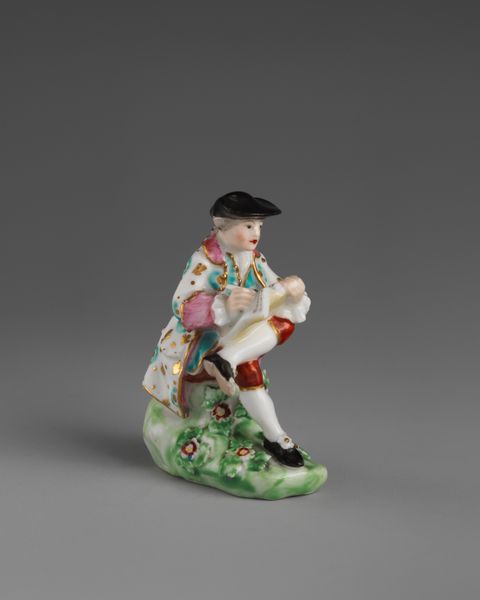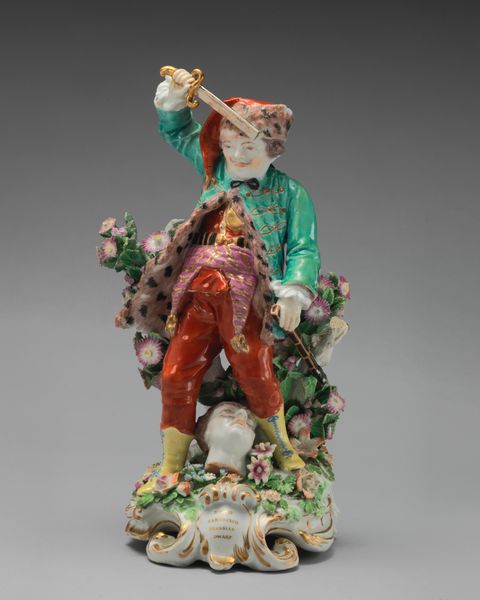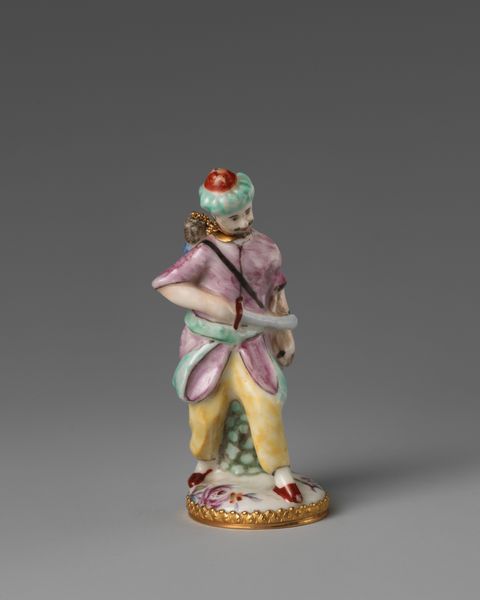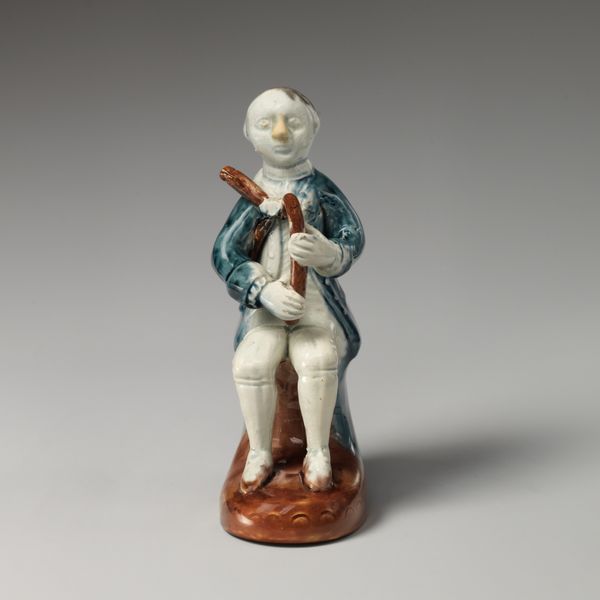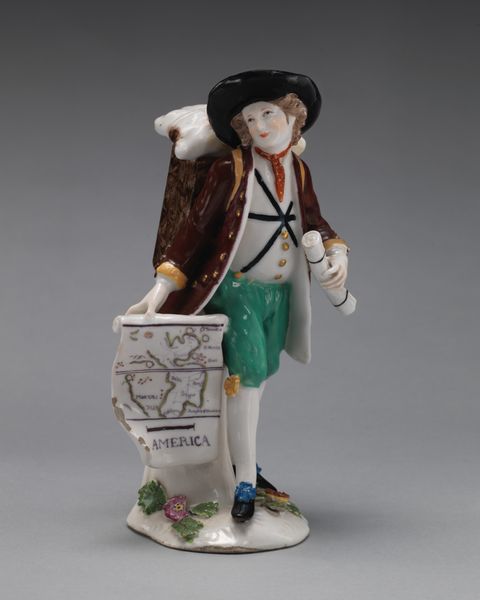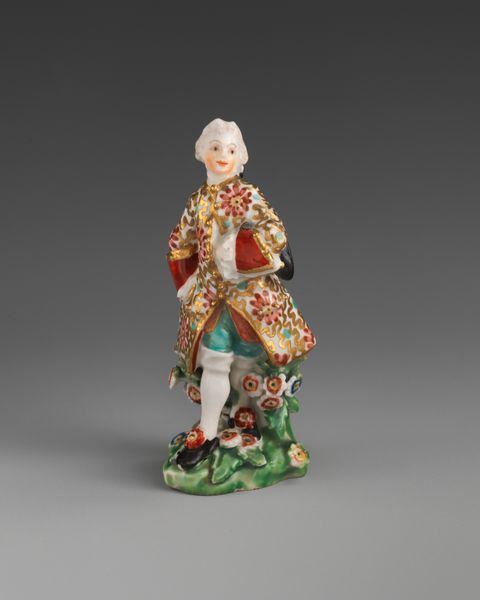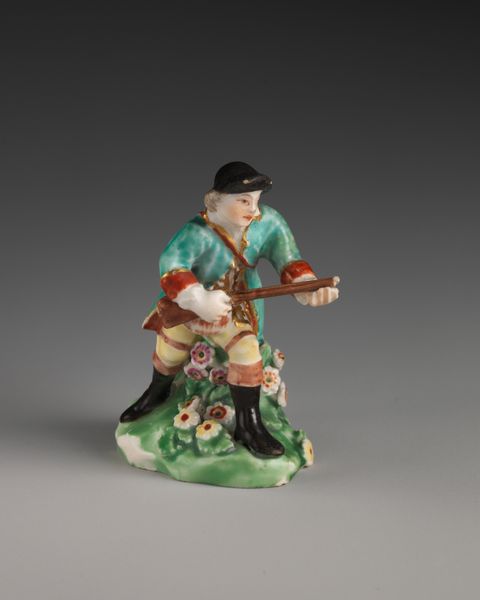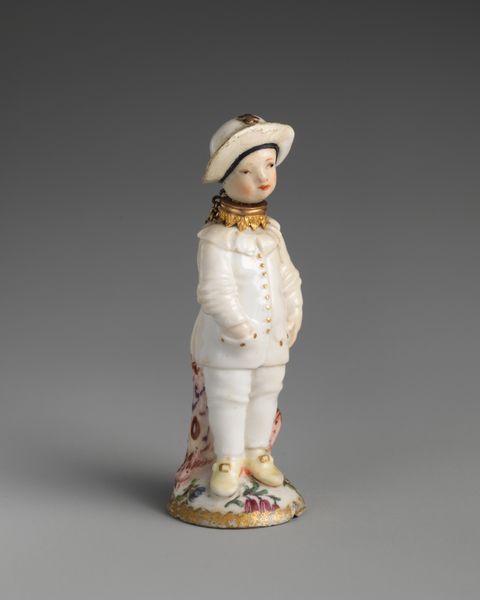
ceramic, porcelain, sculpture
#
ceramic
#
porcelain
#
sculpture
#
men
#
decorative-art
#
rococo
Dimensions: 5 3/4 × 2 5/8 in. (14.6 × 6.7 cm)
Copyright: Public Domain
Editor: This is "Nightwatchman," a porcelain sculpture made by the Chelsea Porcelain Manufactory around 1755 to 1765. It has such a whimsical feel. What does this sculpture communicate to you? Curator: Beyond the Rococo flamboyance, I see encoded social structures. Consider the nightwatchman: ostensibly a figure of safety, yet his position emerges from anxieties about social order and control, particularly in urban environments. Who is he protecting, and from whom? Editor: That's an interesting angle. I mostly saw the beautiful craftsmanship. The details are so fine! Curator: Exactly, and that fine craftsmanship speaks volumes. Porcelain itself was a luxury item, signifying status and power. This nightwatchman, therefore, isn't just any worker; he's a symbol of the elite's attempt to manage, even aestheticize, the lower classes. What do you make of the grapes at his feet? Editor: I guess I thought they were just decorative. Curator: Perhaps, but consider the history. The figure leans casually against these grapes as a signifier of both wealth and possible moral failings – think of Bacchus. His stance becomes less innocent and more about social commentary when considered within the period’s values and aesthetics. Editor: I never thought about decorative arts having such layers! Curator: Decorative arts are never just decorative! They actively participate in shaping and reflecting societal values and power dynamics. This piece serves as a poignant example of that intersection, prompting us to reflect on persistent power structures and who really benefits. Editor: Definitely. Now I'm looking at the sculpture with a totally different understanding. Thanks for shedding light on that!
Comments
No comments
Be the first to comment and join the conversation on the ultimate creative platform.
